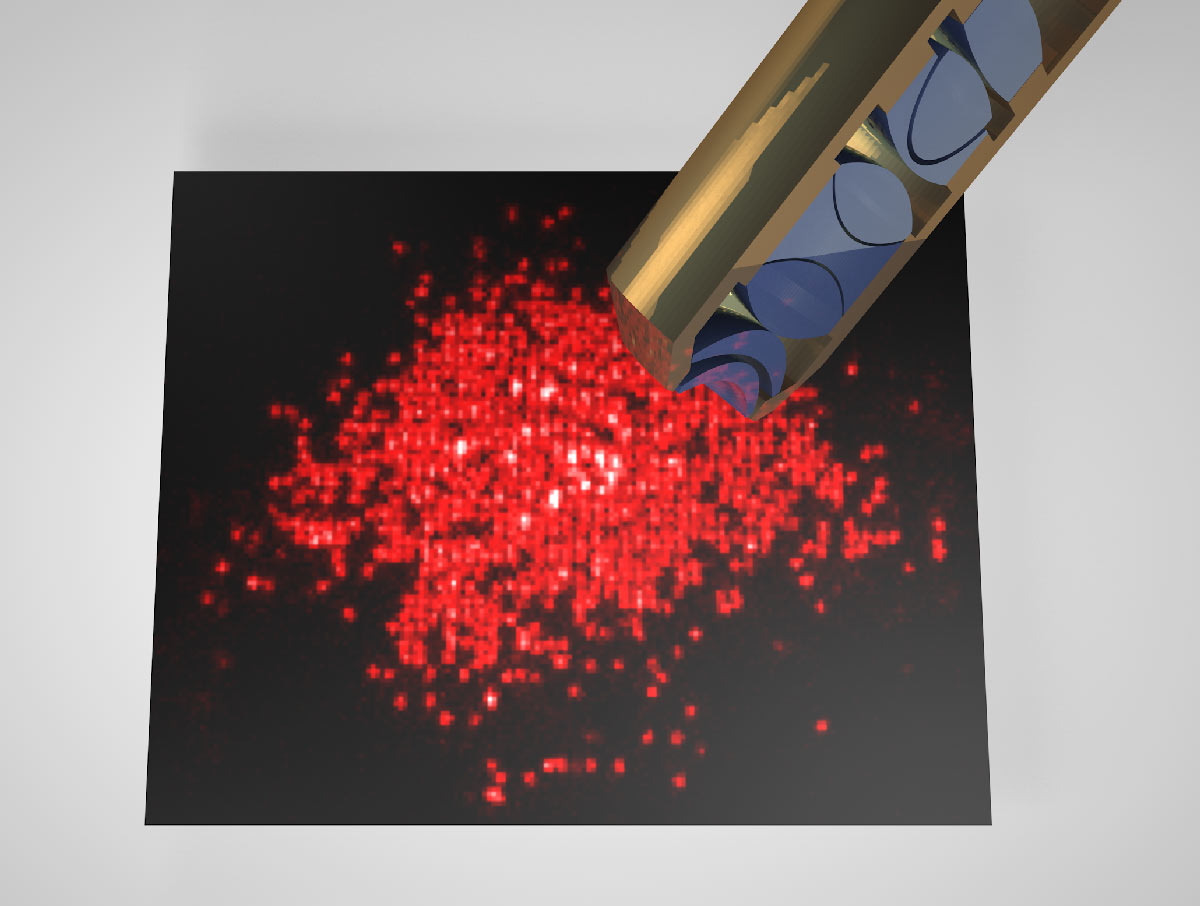Fermionic Quantum Gas Microscope
Joannis Koepsell – Hector Fellow Immanuel Bloch
Die mikroskopische Beschreibung einer Vielzahl exotischer Phänomene wie Magnetismus oder Hochtemperatursupraleitung werfen immer noch Fragen auf. Dieses Projekt beschäftigt sich mit der Simulation dieser Phänomene mittels eines Quantengasmikroskops. Dabei werden ultrakalte fermionische Lithium Atome durch kontrollierte optische Lichtfelder dazu gebracht, sich identisch zu Elektronen in einem Festkörper zu verhalten. Durch die Verwendung einer hochauflösenden Fluoreszenzabbildung kann dabei das Verhalten jedes einzelnen Atoms beobachtet werden.
A rich variety of phenomena in solid state systems such as quantum magnetism or high temperature superconductivity still pose open questions on parts of their microscopic explanation. Due to the complexity of these systems, the underlying quantum many-body dynamics is often not accessible to computational simulation. Fermionic Quantum Gas Microscopes resolve the spin and density of single lattice sites in quantum gas experiments and represent an novel platform to simulate condensed matter phenomena. In these experiments, atoms cooled to the quantum regime are manipulated by light fields to generate optical lattices and finally mimic solid state systems in which the interacting fermionic atoms replace the electrons.
This project is carried out in the Lithium Quantum Gas Microscope experiment of Hector Fellow Immanuel Bloch. It aims at moving towards quantum simulation of the Fermi Hubbard model, topological edge states in superlattices and the Fulde-Ferrell-Larkin-Ovchinnikov phase in spin imbalanced systems. Our setup has the unique feature to simultaneously resolve spins, doubly occupied sites and holes at the same time. Recently, one of the first single site resolved images of fermionic atoms in optical lattices was realized. A new superlattice generation will be implemented to reach lower entropies, increase the system size and to reach higher energy scales.

Single site resolved image of Lithium atoms in an optical lattice shown with an artistic view of the microscope
Joannis Koepsell
Ludwig-Maximilians-Universität MünchenBetreut durch

Immanuel Bloch
Physik Hector Fellow seit 2012
Hector Fellow seit 2012

